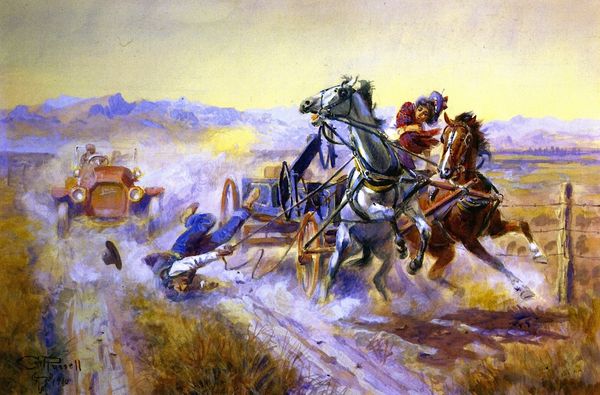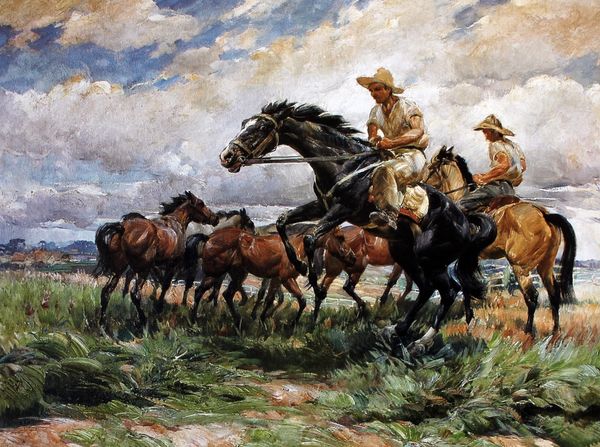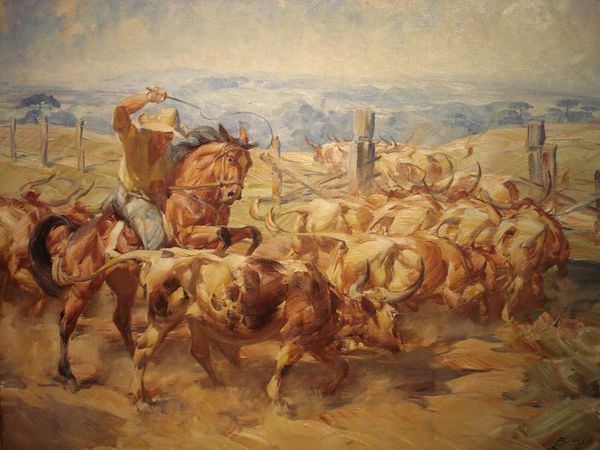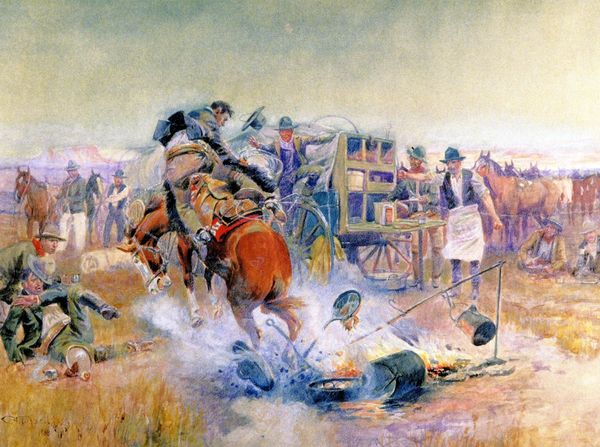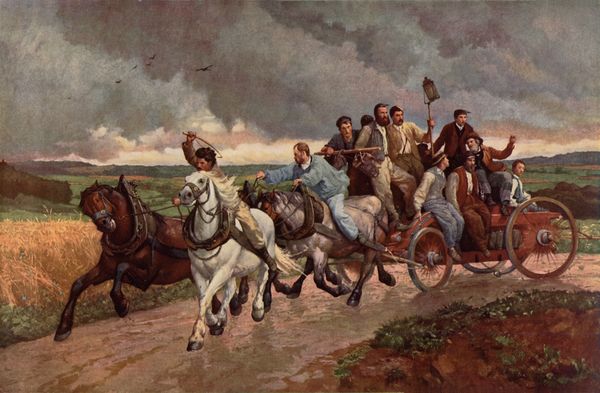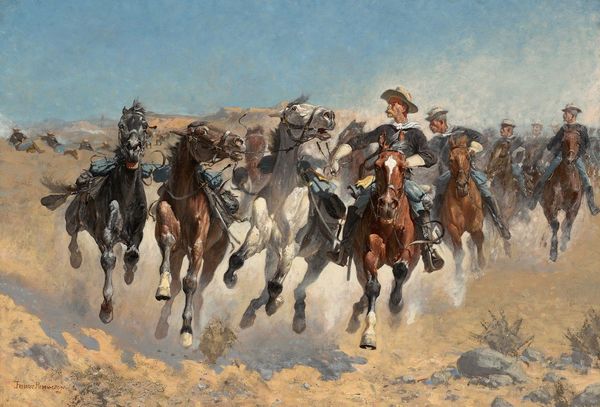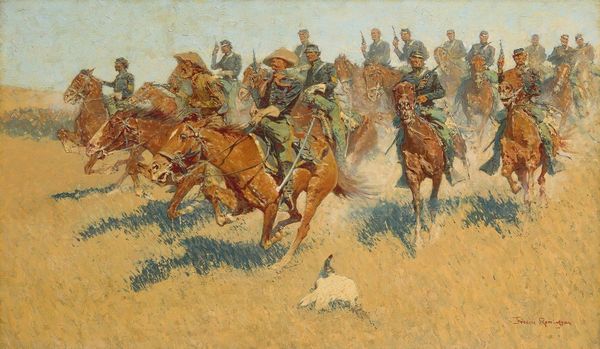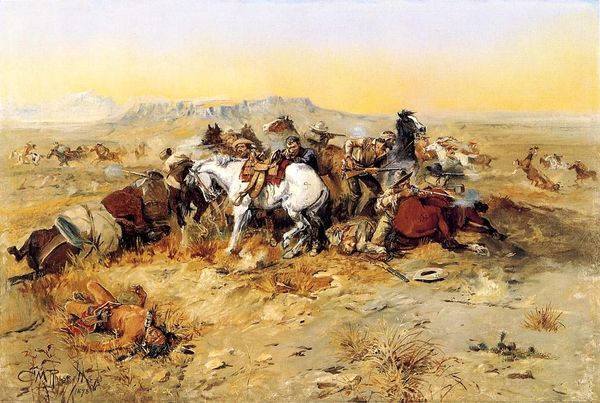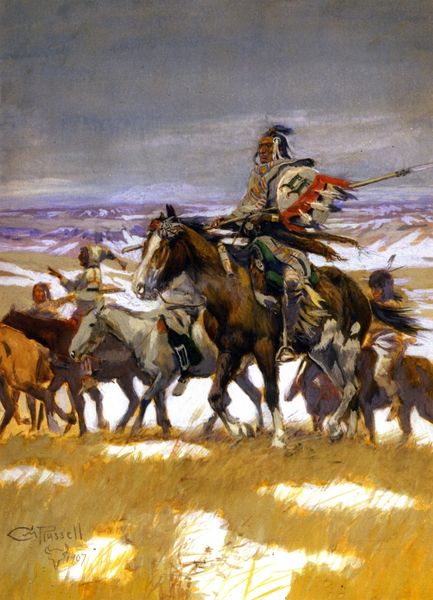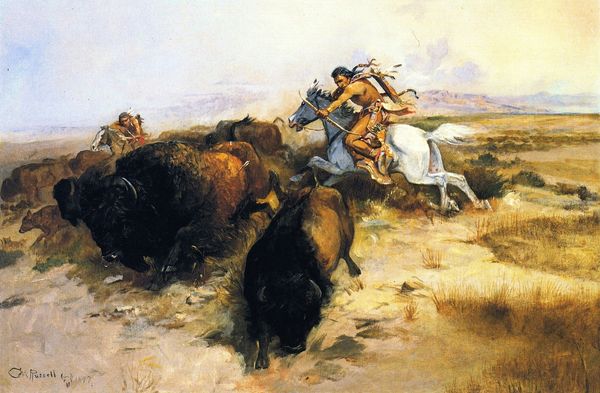
painting, oil-paint
#
narrative-art
#
painting
#
oil-paint
#
landscape
#
oil painting
#
history-painting
#
realism
Copyright: Public domain
Editor: Charles Russell's oil painting, "In Without Knocking" from 1909, bursts with chaotic energy! There's so much motion and, well, violence. Horses rearing up, guns firing. It’s like a freeze-frame of a Wild West shootout. What strikes you most about this piece? Curator: It's the visual language, really. The composition pulses with a masculine bravado so intrinsic to the Wild West mythos. Notice the deliberate scattering of playing cards – they signify chance, risk, but also a kind of desperate hope for fortune. Do you see how the "Hoffman Hotel" sign looming overhead becomes a symbolic stage for this very human drama? Editor: I do, and I’m also wondering about the historical context. I mean, were these kinds of violent raids a common occurrence? Or is Russell mythologizing the West? Curator: That's the crucial question. Russell lived among cowboys and the Blackfoot, and while he romanticized elements of frontier life, he was also documenting its harsher realities. The raised guns, the fallen horse, these echo broader anxieties about territorial conflict, the disruption of Indigenous lifeways, and the rapid modernization altering that landscape. Consider the psychological weight those symbols carried. Editor: So, it’s not just about cowboys and shootouts. It’s also about the end of an era? Curator: Precisely. The painting encapsulates a pivotal moment where a certain ideal of untamed freedom collides head-on with the encroaching forces of "civilization." It’s a potent, visually arresting metaphor for change and loss, encoded in something as seemingly simple as scattered cards and gun smoke. What new avenues for inquiry does this discussion reveal? Editor: I hadn't thought about the idea of loss as embedded in the images, so I'll look at the visual elements of this work much differently. This also brings a greater attention to detail, so I can better understand the visual culture of the past. Curator: Agreed. Looking at art with the perspective of cultural memory enables a deeper connection to a symbolic cultural narrative.
Comments
No comments
Be the first to comment and join the conversation on the ultimate creative platform.

